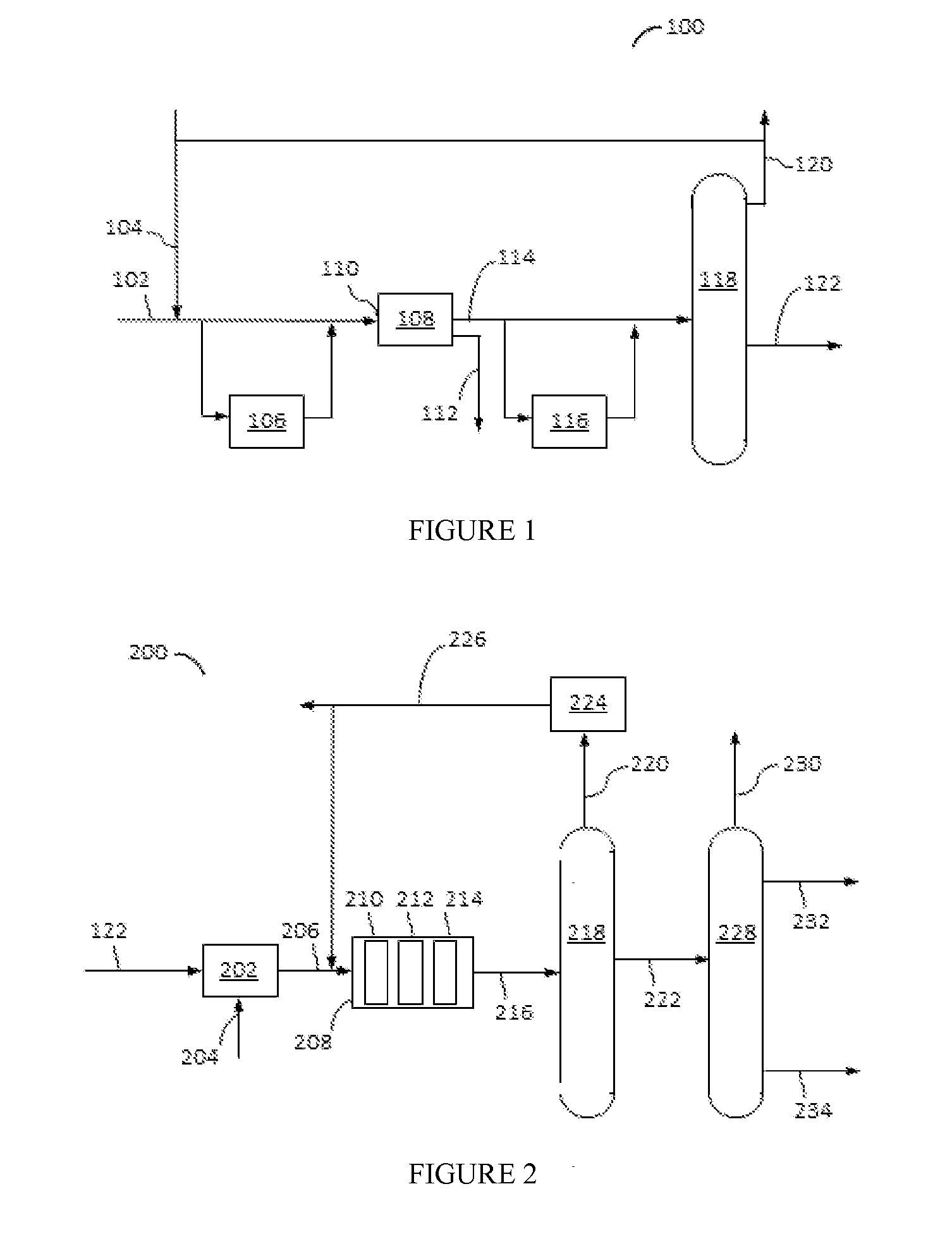Method and Apparatus for Improving A Hydrocarbon Feed
a hydrocarbon feed and hydrocarbon technology, applied in the direction of chemical refining, separation process, centrifuge, etc., can solve the problems of scts not being compatible with other heavy hydrocarbons, scts produced under specific conditions are generally incompatible with scts, etc., to improve the compatibility of hydrocarbon feed, improve the compatibility, and increase the effect of hydrocarbon
- Summary
- Abstract
- Description
- Claims
- Application Information
AI Technical Summary
Benefits of technology
Problems solved by technology
Method used
Image
Examples
example 1
[0123]In Example 1, a STC having a solubility blending number of about 216 is combined in a 60:40 ratio (wt:wt) with a first mid-cut fluid having a solubility blending number of about 123. The mixture is allowed to equilibrate at about 25° C. for approximately 24 hours. The fluid-SCT mixture is then heated at 95° C. for 30 minutes. After heating, the fluid-SCT mixture is transferred to a series of centrifuge tubes. A second fluid, heptane, is added to each centrifuge tube in order to change the solubility blending number as shown in Table 1. The combination of the fluid-feed mixtures and heptane are thoroughly mixed and stored at about 25° C. for approximately 24 hours. The resulting mixtures are then centrifuged for 1 hour at 4000 rpm and 40° C. The supernatant (i.e., the lower density portion) is decanted to a second centrifuge tube and used to measure the compatibility parameters. Total C7 Insolubles in the remaining higher density portion are determined in accordance with the In...
example 2
[0125]In Example 2, a tar sample having an insolubility number of about 130 is centrifuged at about 4000 rpm for about for 55 minutes at about 40° C. The lower density portion that separates is isolated and the insolubility number of the lower density portion is determined. The insolubility number of the lower density portion is about 105. The higher density portion separated by the centrifuge process represents about 1.5 wt. % of the tar sample.
example 3
[0126]In Example 3, Example 2 is substantially reproduced except that the tar has an insolubility number of about 118 before being subjected to the centrifuge treatment. After centrifuging, the lower density portion separated thereby has an insolubility number of about 108. The higher density portion separated by the centrifuge process represents about 1.5 wt. % of the tar sample.
PUM
| Property | Measurement | Unit |
|---|---|---|
| Size | aaaaa | aaaaa |
| Weight | aaaaa | aaaaa |
| Concentration | aaaaa | aaaaa |
Abstract
Description
Claims
Application Information
 Login to View More
Login to View More - R&D
- Intellectual Property
- Life Sciences
- Materials
- Tech Scout
- Unparalleled Data Quality
- Higher Quality Content
- 60% Fewer Hallucinations
Browse by: Latest US Patents, China's latest patents, Technical Efficacy Thesaurus, Application Domain, Technology Topic, Popular Technical Reports.
© 2025 PatSnap. All rights reserved.Legal|Privacy policy|Modern Slavery Act Transparency Statement|Sitemap|About US| Contact US: help@patsnap.com



